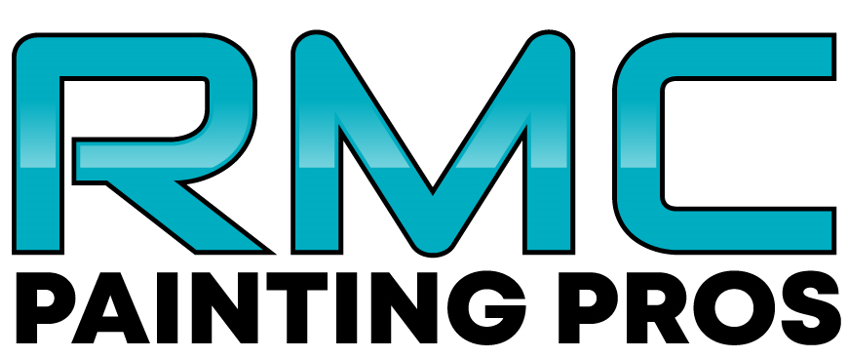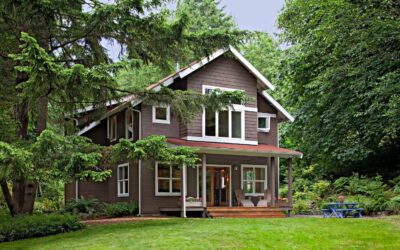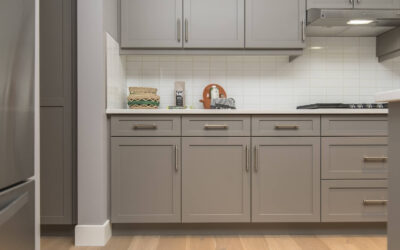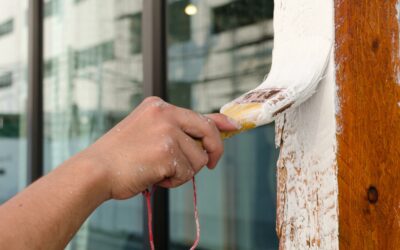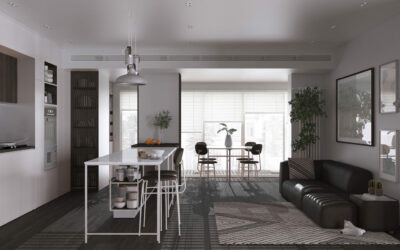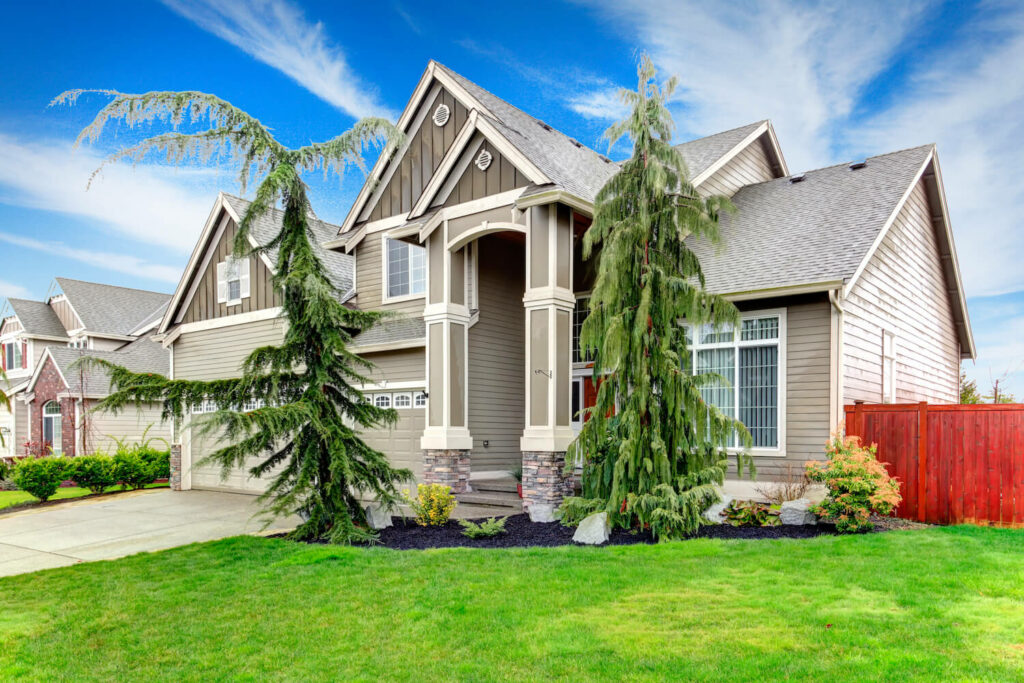
Giving your home a fresh coat of paint can do wonders for its curb appeal and overall aesthetic. Whether you’re planning to sell your house or just want to enhance its appearance, exterior painting is a worthwhile investment. However, before you embark on this project, it’s essential to have a clear understanding of the costs involved.
Estimating exterior painting costs involves various factors, and in this guide, we’ll walk you through the process to help you plan and budget effectively.
1. Evaluate the Scope of the Project
The first step in estimating exterior painting costs is to assess the scope of the project. Take a detailed look at the surfaces you plan to paint. Consider the size of your home, the number of stories, and the architectural features that might affect the complexity of the job. Make note of areas that may require special attention, such as trim, doors, windows, and other intricate details.
Additionally, inspect the condition of the existing paint. If there’s peeling or damage, you may need to factor in additional prep work, which can impact both time and cost. The more thorough your evaluation, the more accurate your cost estimate will be.
2. Measure the Exterior Surface Area
Once you have a clear understanding of the project’s scope, measure the surface area that needs painting. This involves calculating the square footage of each wall or surface you plan to paint. Keep in mind that you’ll need to measure both the length and height of each surface and then multiply these figures to get the total square footage.
For example, if you’re painting all four sides of a single-story house with walls that are 10 feet high, and each side is 40 feet long, the total square footage to calculate would be:
Total Square Footage=(Length×Height)×Number of Sides
Total Square Footage=(40 ft×10 ft)×4=1600 sq ft
Measuring accurately is crucial because it directly impacts the amount of paint and other materials you’ll need.
3. Select the Paint Type and Quality
The type and quality of paint you choose will significantly influence the overall cost of the project. Exterior paints come in various types, including latex, oil-based, and acrylic. Latex paints are popular for their quick drying time and easy cleanup, while oil-based paints are known for their durability and resistance to harsh weather conditions.
Consider the climate in your area and the specific needs of your home when selecting the paint type. Additionally, paint quality varies, with premium paints offering better durability and color retention. Higher-quality paints generally come with a higher price tag, but they may save you money in the long run by requiring fewer coats and lasting longer.
4. Estimate Paint Quantity
Once you’ve chosen the paint type and quality, you can estimate the quantity of paint needed. Most paint cans provide information on coverage per gallon, usually given in square feet. Divide the total square footage of your project by the coverage per gallon to determine the number of gallons needed.
Number of Gallons=Total Square FootageCoverage per Gallon
For example, if a gallon of paint covers 400 square feet, and your project’s total square footage is 1600 square feet:
Number of Gallons=1600 sq ft400 sq ft/gallon=4 gallons
Always round up to the nearest whole number to ensure you have enough paint to complete the job.
5. Consider Primer and Additional Materials
In addition to paint, you’ll likely need primer, especially if you’re painting over a new surface or one with significant repairs. Primer helps the paint adhere better and provides a smoother finish. Estimate the quantity of primer needed using a similar calculation as for paint.
Number of Gallons of Primer=Total Square FootageCoverage per Gallon of Primer
Aside from paint and primer, factor in other materials such as brushes, rollers, painter’s tape, drop cloths, and any repair or patching materials needed for surface preparation. These additional materials contribute to the overall cost of the project.
6. Account for Labor Costs
Labor costs are a significant component of exterior painting expenses, especially if you plan to hire professional painters. The cost of labor varies depending on factors such as location, the complexity of the job, and the experience of the painters.
Obtain quotes from several reputable painting contractors to get a sense of the average labor cost in your area. Some contractors may charge a flat rate, while others may charge per hour or per square foot. Be sure to inquire about the specifics of what each quote includes, such as surface preparation, priming, and the number of coats of paint.
If you decide to tackle the project yourself, consider the time and effort required. Painting the exterior of a house is a labor-intensive task, and you’ll need to set aside sufficient time to complete the job properly.
7. Factor in Prep Work and Repairs
Preparation is key to achieving a professional-looking paint job that lasts. Depending on the condition of your home’s exterior, you may need to invest time and money in surface preparation. This can include scraping off old paint, sanding rough surfaces, filling cracks and holes, and washing the exterior.
The more prep work required, the more time and materials you’ll need, impacting both the overall cost and the longevity of the paint job. Neglecting proper preparation can result in a subpar finish and premature paint failure.
8. Consider the Number of Coats Needed
The number of coats required depends on factors such as the color you’re painting over, the type of paint, and the condition of the surface. Darker colors may require more coats to achieve full coverage, and some surfaces may need an extra coat for added durability.
Check the manufacturer’s recommendations for the specific paint you’ve chosen. Higher-quality paints often provide better coverage, potentially reducing the number of coats needed. However, keep in mind that cutting corners on coats can compromise the longevity and appearance of the paint job.
9. Account for Accessibility Challenges
The accessibility of your home’s exterior can impact the overall cost of the painting project. If your house has multiple stories or intricate architectural details that are challenging to reach, additional equipment such as scaffolding or ladders may be necessary. Safety considerations may also require extra precautions and time.
Discuss these challenges with painting contractors during the quoting process to ensure accurate estimates that account for the specific needs of your home.
10. Get Multiple Quotes
To ensure you get a fair and competitive estimate, obtain quotes from multiple painting contractors. Consider factors such as experience, reputation, and customer reviews when selecting contractors to provide quotes. A detailed and transparent quote should include all aspects of the project, from preparation and priming to the number of coats and cleanup.
Comparing multiple quotes not only helps you find the best price but also gives you a better understanding of the scope of the project and the services offered by each contractor.
Conclusion
Estimating exterior painting costs involves careful consideration of various factors, from the size and condition of your home to the type and quality of paint you choose. By taking the time to assess the scope of the project, measure the surface area, and consider all necessary materials and labor, you can create a comprehensive estimate that allows for an accurate budget.
Remember that investing in quality materials and professional labor can result in a longer-lasting and more visually appealing paint job. Whether you choose to hire professionals or tackle the project yourself, thorough preparation and attention to detail are essential for a successful and cost-effective exterior painting experience. With the right planning, your home can receive a fresh, vibrant look that enhances its curb appeal and stands the test of time.
Read Other Blog Posts
DIY vs. Professional: When to Hire an Exterior Painting Contractor
When you envision improving...
Transform Your Kitchen: How Cabinet Painting Can Make a Big Impact
A kitchen is often the heart...
Repair, Restore, Repaint: The Power of Professional Dry Rot Solutions and Services
Dry rot is often viewed with...
Quality Contractor Counts: Why Investing in Professional Interior Painting Pays Off
When it comes to home...
How General Contractors & Painters Collaborate for a Stunning Renovation Project
Renovating a space is a...
The Ultimate Guide to Choosing the Right Paint Finish for Every Room
When it comes to painting your...
